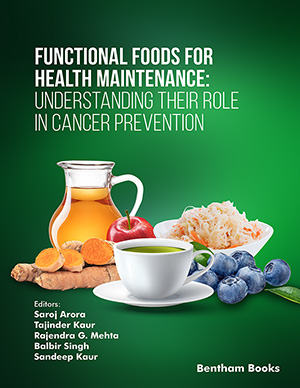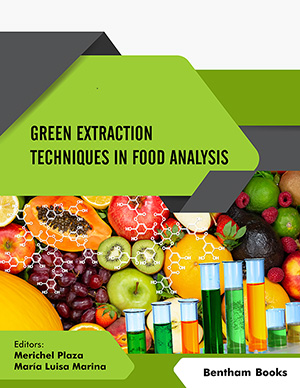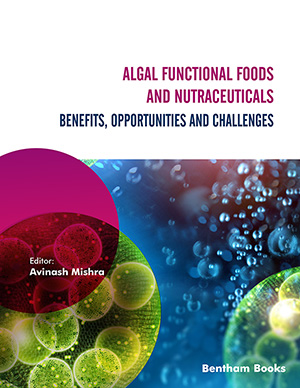Abstract
Backgrounds: Herbal medicines have been used in medicine over the last three decades, and the demand for herbal drugs has been increasing in modern medicine due to their health benefits and pharmacological activities. Herbal medicines are mainly derived from plants and their derived products, which have a significant role in the traditional and modern systems of medicine. Plant-based products have been used in the preparation of numerous health products, including some of the modern pharmaceutical preparation. Ginkgo biloba is one of the important medicinal plants of herbal medicine, which contains a significant amount of sciadopitysin.
Methods: Biological importance and therapeutic benefit of sciadopitysin have been investigated in the present investigation through scientific data analysis of different scientific research work in order to know the therapeutic potential of sciadopitysin in medicine. Pharmacological activities of sciadopitysin have been searched and analyzed in the present work through different literature databases. Modern analytical tools for the isolation and quantification of sciadopitysin have also been discussed in the present work to know the therapeutic value of sciadopitysin in medicine.
Results: Scientific data analysis of different research work revealed the biological importance and therapeutic benefit of sciadopitysin, which is a biflavonoids class phytochemical present in the Ginkgo biloba. Scientific data analysis of present work revealed the biological importance of sciadopitysin in medicine for the treatments of human health complications against diabetes and its complications, osteoclastogenesis, myocardial infarction, Alzheimer’s disease, hepatic and renal toxicity, inflammatory disorders, osteoporosis, human skin disorders, lymphocyte proliferation, and fungal diseases. Further scientific data analysis revealed the importance of standardization of plant materials and their derived products through sciadopitysin in medicine.
Conclusion: Scientific data analysis of collected research work revealed the biological importance of sciadopitysin in medicine for its effectiveness against human health complications.
Keywords: Sciadopitysin, diabetes, osteoclastogenesis, myocardial infarction, Alzheimer’s disease, hepatic, inflammation, osteoporosis, skin disorders.
[http://dx.doi.org/10.1016/j.jep.2019.112158] [PMID: 31421182]
[http://dx.doi.org/10.2174/2215083803666170615111759]
[http://dx.doi.org/10.1016/j.procbio.2021.06.007]
[http://dx.doi.org/10.1016/j.bjp.2017.09.004]
[http://dx.doi.org/10.1016/j.arabjc.2020.05.037]
[http://dx.doi.org/10.1016/j.sajb.2020.10.008]
[http://dx.doi.org/10.1016/j.jaim.2017.07.013] [PMID: 30120054]
[http://dx.doi.org/10.2174/2215083804666180416124949]
[PMID: 28987373]
[http://dx.doi.org/10.1016/j.heliyon.2019.e02191] [PMID: 31720440]
[http://dx.doi.org/10.1016/S2221-1691(12)60116-6] [PMID: 23569990]
[http://dx.doi.org/10.1016/j.sciaf.2020.e00446]
[http://dx.doi.org/10.2174/1574891X13666180913154355] [PMID: 30210007]
[http://dx.doi.org/10.1080/14786419.2013.790031] [PMID: 23627438]
[http://dx.doi.org/10.2174/1573407214666180511153438]
[http://dx.doi.org/10.1016/j.lwt.2021.112708]
[http://dx.doi.org/10.1016/j.jclepro.2022.131541]
[http://dx.doi.org/10.3390/antiox10111704] [PMID: 34829574]
[http://dx.doi.org/10.1016/j.jenvman.2022.114555] [PMID: 35085965]
[http://dx.doi.org/10.1016/j.foodchem.2021.131594] [PMID: 34838409]
[http://dx.doi.org/10.1016/j.biopha.2021.112545] [PMID: 34922112]
[http://dx.doi.org/10.1016/j.fochx.2022.100226] [PMID: 35499003]
[http://dx.doi.org/10.1016/j.phyplu.2022.100259]
[http://dx.doi.org/10.1016/j.foodres.2022.111010] [PMID: 35400421]
[http://dx.doi.org/10.1016/j.bjbas.2017.05.009]
[http://dx.doi.org/10.1007/s11655-013-1595-3] [PMID: 24092244]
[http://dx.doi.org/10.1016/j.jtcme.2016.11.003] [PMID: 28725632]
[http://dx.doi.org/10.1007/s11655-014-1960-x] [PMID: 25501296]
[http://dx.doi.org/10.2174/1871530321666210108122924] [PMID: 33423654]
[http://dx.doi.org/10.1016/S1875-5364(19)30081-0] [PMID: 31526502]
[http://dx.doi.org/10.1515/znc-1998-11-1202]
[http://dx.doi.org/10.1016/j.metabol.2021.155071]
[http://dx.doi.org/10.3390/plants11101381] [PMID: 35631806]
[http://dx.doi.org/10.1002/jat.3620] [PMID: 29603293]
[http://dx.doi.org/10.3109/10715762.2014.903562] [PMID: 24628445]
[http://dx.doi.org/10.1002/jbt.22887] [PMID: 34392578]
[http://dx.doi.org/10.1159/000504395] [PMID: 31775147]
[http://dx.doi.org/10.1016/S0272-6386(12)81008-0] [PMID: 8128947]
[http://dx.doi.org/10.1016/j.bmcl.2015.04.106] [PMID: 26004578]
[http://dx.doi.org/10.1002/jat.4211] [PMID: 34102705]
[http://dx.doi.org/10.1002/ptr.6292] [PMID: 30693991]
[http://dx.doi.org/10.1016/j.intimp.2017.05.029] [PMID: 28575726]
[http://dx.doi.org/10.1016/j.fct.2013.04.028] [PMID: 23624148]
[http://dx.doi.org/10.1016/j.bmcl.2006.03.018] [PMID: 16574412]
[http://dx.doi.org/10.1159/000211505] [PMID: 9413894]
[http://dx.doi.org/10.1016/0024-3205(95)00305-P] [PMID: 7623623]
[http://dx.doi.org/10.1055/s-2002-19876] [PMID: 11842336]
[http://dx.doi.org/10.1016/j.fitote.2021.104909] [PMID: 33894315]
[http://dx.doi.org/10.1002/ptr.7041] [PMID: 33759279]
[PMID: 29874021]
[http://dx.doi.org/10.1159/000138116] [PMID: 4059325]
[http://dx.doi.org/10.1016/j.ijbiomac.2018.07.085] [PMID: 30009906]
[http://dx.doi.org/10.1248/cpb.55.757] [PMID: 17473463]
[http://dx.doi.org/10.1055/s-2005-916236] [PMID: 16557462]
[http://dx.doi.org/10.1021/np970569m] [PMID: 9834158]
[http://dx.doi.org/10.1007/BF01965048] [PMID: 3218613]
[http://dx.doi.org/10.1016/j.chroma.2016.01.062] [PMID: 26852619]
[http://dx.doi.org/10.1111/j.1346-8138.2001.tb00117.x] [PMID: 11449670]
[http://dx.doi.org/10.1080/14786410500463312] [PMID: 16644528]
[http://dx.doi.org/10.3389/fphar.2022.815235] [PMID: 35264954]
[http://dx.doi.org/10.3389/fphar.2021.655659] [PMID: 34084136]
[http://dx.doi.org/10.1016/j.taap.2019.02.010] [PMID: 30790579]
[http://dx.doi.org/10.1515/znc-2003-1-212] [PMID: 12622229]
[http://dx.doi.org/10.1002/bmc.4241] [PMID: 29575000]
[http://dx.doi.org/10.1016/j.chemphyslip.2012.08.003] [PMID: 22981471]
[http://dx.doi.org/10.1515/znc-2005-9-1004] [PMID: 16320608]
[http://dx.doi.org/10.1021/np030117b] [PMID: 12880325]
[http://dx.doi.org/10.1055/s-2007-969851] [PMID: 17405053]
[PMID: 19230397]
[PMID: 17966356]
[PMID: 11596315]
[http://dx.doi.org/10.1016/j.phytochem.2019.04.016] [PMID: 31103779]
[http://dx.doi.org/10.1007/BF02969294] [PMID: 17225453]
[http://dx.doi.org/10.3390/metabo11090585] [PMID: 34564401]
[http://dx.doi.org/10.1007/s11655-016-2514-1] [PMID: 28120207]
[PMID: 28413980]
[http://dx.doi.org/10.1177/1934578X1801301208]
[http://dx.doi.org/10.4103/0973-7847.162140] [PMID: 26392714]
























